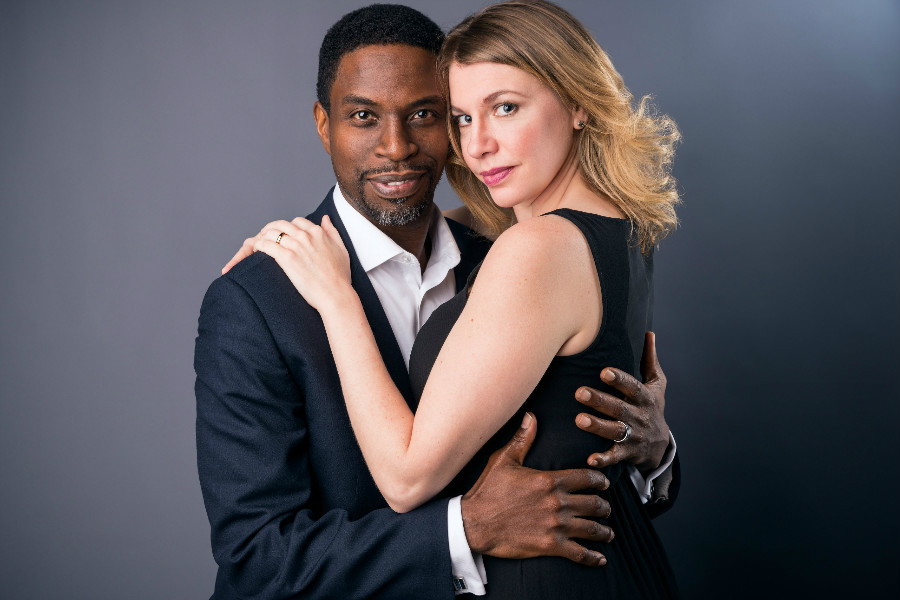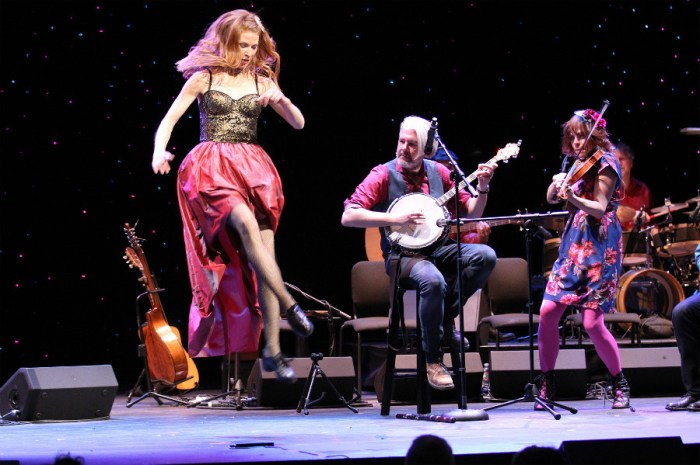The Huntington’s production of “A Doll’s House” isn’t shying away from the timeliness of its 2017 presentation. While playwright Henrik Ibsen’s story, set in 1879, boldly questioned the role of marriage, identity and gender, its level of daring in modern day could be white noise without a refresh. As it happens, director Melia Bensussen has given the classic play a facelift; casting leading couple Nora and Tovald as 20-somethings and working with a translator to add updated rewrites as the show went into production. “Melia said we should approach this as a new play,” explain Andrea Syglowski, who plays Nora and was previously seen at the Huntington in the very different production, “Venus in Fur.” “The play has been done about eight billion times since 1879, and the actors were traditionally cast to be 10-15 years older. But they’re actually just young parents, who were probably married at 20. That’s how we’re taking this production.” Nora finds herself in a series of self-inflicted conflicts in “A Doll’s House,” but most are rooted in her traditional role as a woman, a wife and homemaker at the turn of the century. Syglowski discusses her character’s plight, the play’s importance in modern times and what we can learn from taking an actor’s approach to empathy. Despite the modernizations made in this version of “A Doll’s House,” do you think the characters and their dynamics are still relatable to contemporary audiences? Are there similarities in some of the conflicts and struggles that come up within the play that you think are still present today? Is there a moral to be learned by audiences coming in after such a tough year — especially for women? Nora finds herself in a few sticky situations — being blackmailed, lying, etc. — but it’s sometimes hard to sympathize with her, even when you want to. Do you think she can be considered an anti-hero of sorts? If you go:
Jan. 6 to Feb. 5
Melia chose [this show] because it gets down to complexities and truths in marriage. There’s the freeing the bird out of the cage, feminist approach, but I think the play is inherently speaking about the roles and masks that we wear in relationships. It’s about how society constrains us in trying to figure out our true identities versus the roles we feel we need to play while in marriage. I think as long as human beings are in relationships and partnerships, there’s always going to be that juggling of holding onto yourself and you own identity while being present for your partner. It’s a struggle to be in relationships while also standing on our own feet. I think anyone can relate to that today. I know I can.
I think looking back to what was leading up to the election and how Hilary Clinton was treated by Donald Trump’s supporters and the media, I think we as a culture have difficulty accepting women in positions of power. We’re not living in Ibsen’s society anymore, but we’re still struggling to understand female identity. That’s one thing I think “A Doll’s House” does — it’s important to look back and see where you’ve come from. You need to look backward to move forward in some ways.
Yeah, it’s tough. Ibsen talks about the anti-hero and the anti-villain, but I think actors are always going to advocate for the roles they’re playing, so I’m going to try to understand why she behaves the way she does. I feel empathy for her — but I feel empathy for a lot of characters in the play, frankly. There’s this line in the last act when she says, “I’ve become nothing, and you are guilty.” She realizes she’s not connected to her true self, and we, as artists, this is what we spend our lives trying to figure out. Anyone can have empathy for that.
Avenue of the Arts/BU Theatre
264 Huntington Ave.
Tickets start at $25, huntingtontheatre.org
How ‘A Doll’s House’ updated 1879 for a 2017 audience

Nile Hawver/Nile Scott Shots


















